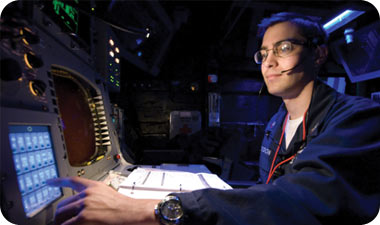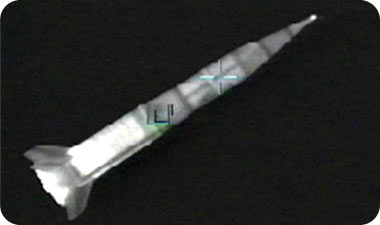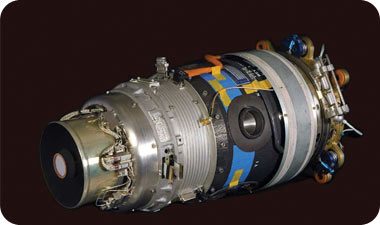The US destroyed a satellite that stopped working on the grounds that the toxic substance hydrazine, which is in the fuel tank, could endanger the environment. What is that substance and was the fear justified? for the destruction of the satellite
Tal Inbar, Galileo, April 2008

A secret American satellite, which went out of action and remained lost in a useless orbit hundreds of kilometers above the earth, was part of a space and political drama, when the United States launched a missile at it on February 21.2.2008, 500, which they destroyed. The reason given by the United States for the destruction of the satellite was to prevent its fragments from damaging inhabited places on Earth, and in particular, as American spokesmen emphasized, to prevent the satellite's fuel tank, which contained about XNUMX kg of the toxic substance hydrazine, from polluting the environment and endangering A person.
Hydrazine, 2N4H, is a highly toxic and dangerously unstable compound. Hydrazine is commonly used in satellites, as fuel for their propulsion and direction control systems. Short-term exposure to high levels of hydrazine may cause irritation of the eyes, nose and throat, dizziness, headaches, nausea, pulmonary edema and damage to other systems in the body. Prolonged exposure damages other systems and can cause death.
Why was the satellite destroyed?
Various hypotheses have been raised in the world's space community, both regarding the nature of the satellite, which was launched by the National Reconnaissance Office (NRO), the body responsible for operating the United States' various intelligence satellite arrays, and regarding the real reason for the United States' decision to intercept and shoot down the satellite from its orbit. The official claim - concern about contamination by the satellite's fuel - was rejected around the world, since many satellites have fallen to Earth over the years, and the environmental damage or health risk they caused was negligible (even a Russian satellite that fell in Canada, which contained a small nuclear reactor, was contaminated with radiation extremely limited area and did not cause any damage).
Despite the lack of confidence in the United States' announcement, it must be remembered that the cases in which satellites containing hydrazine fell, which ended without damage or casualties, cannot testify that the same will be true in the future. The head of NASA, Michael Griffin (Griffin), expressed fear of falling from all this fuel at a press conference where representatives of the US Air Force and the Ministry of Defense were also present. A team of NASA experts determined that there is a real danger that all the fuel will survive passage through the atmosphere, and there is no certainty that all the fuel in it will be dispersed or burned.
Some space experts hypothesized that the satellite contained highly classified technologies, and that the United States feared that even after entering the Earth's atmosphere and burning the satellite, whole parts of it would remain, which, if they fell into the hands of other countries, would allow them to learn about the classified American technology. In this context, it is interesting to note that in the past, when classified American satellites fell from space to Earth, no interception operations were carried out. Furthermore - the Deputy Chief of the Joint Chiefs of Staff of the United States announced, before shooting at the satellite, that the United States has the ability to locate and quickly collect the fragments, but did not specify what this ability is (it is likely that special forces of the United States have already been put on alert In the past, for collection operations of classified material, if parts of satellites and if unmanned aircraft, or even manned aircraft).
Others put forward the hypothesis, which American spokesmen vigorously denied, that the satellite was equipped with a nuclear system to produce electricity (RTG - Radio isotope Thermo-electric Generator). This claim is not reasonable at all, mainly because American legislation prohibits the operation of satellites using nuclear power systems, if they operate near the Earth. Research spacecraft for the study of the outer solar system have been equipped with such means, but the coordination between the various agencies of the United States, including the Army, Air Force, NASA and NRO, is extremely close, as are the oversight mechanisms of the Ministry of Energy and other ministries. This close coordination and supervision does not allow the placement of a nuclear system on satellites of the type of satellite that was shot down, without the knowledge of many parties and a reasonable chance that the information will leak to the public.
The most accepted explanation among the various analysts is that the United States was looking for an opportunity to prove its ability to intercept satellites, and to demonstrate the performance of its anti-missile missile, SM-3 (Standard Missile 3) designed to be launched from special ships.
the interception missile
The SM-3 missile, which hit the satellite, is manufactured by the Raytheon company and is originally designed to hit short- and medium-range ballistic missiles. Missiles of this type are installed on special ships of the United States Navy, and together with their special radar, constitute the Agis weapon system. The missile that intercepted the satellite was launched from the ship Lake Erie, which is one of two ships demonstrating the Aegis weapon system. The missile is three-stage, powered by solid fuel, is 6.55 meters long and weighs about 1,500 kg at launch. The third stage of the missile is known as the Kill Vehicle and is capable of maneuvering and is equipped with an electro-optical sensor that enables target identification, and even homing to an aiming point determined by the system operators.
The technical challenge in intercepting the satellite
As a principle, hitting a "dead" satellite, which does not perform maneuvers and is a few meters long, and has a high and clear thermal signature, should not constitute a significant technical problem. Predicting the satellite's trajectory is the responsibility of the United States Space Command, which is able to perform this task with relative ease. The speed of the satellite was about 8 kilometers per second (which is the speed required to go around in a low circular orbit), while the speed of the missile is much slower, about one kilometer per second. The interception was carried out so that the missile was launched to a point in space, which the satellite would reach after a short period of time. Calculating this point also poses no real difficulty. The American achievement in intercepting the satellite is important, both from the technological point of view and from the operational point of view, and demonstrates the capability of warfare against satellites in the hands of the United States. Even in the arena of defense against ballistic missiles, the Raytown company can be blessed with the achievement of the missile produced by it, as can Lockheed Martin, the manufacturer of the Aegis weapon system.

Reactions in the world
The interception of the satellite provoked angry reactions in Russia and China, who claim that the United States actually tested modern weapons, violated international conventions relating to space and renewed the arms race in space. The spokesperson of the Chinese Foreign Ministry even stated in his appearance before the media that China is concerned about the possibility of fragments of the American satellite falling in its territory, and demanded that the United States show responsibility and transparency, and provide China with full technical information about the destruction of the satellite (we note that China did not do this in the attempt to destroy its satellite -Herself, a year before the American experiment).
The spokesman for the American Ministry of Foreign Affairs, Sean McCormick, stated even before the satellite was hit that the American action was aimed at defense and was not a test of a weapon in space. Eight hours after the satellite was hit, the US Department of Defense announced that it cannot rule out the possibility that a dangerous substance will fall to Earth. At the same time, it was noted that no satellite fragments "larger than a football" were observed.
"The interception of the satellite is a signal from the Americans - we will know how to deal with any satellite that endangers us," said Avi Har-Evan, the former director of the Israeli Space Agency, in an interview with the Ynet website. Har-Evan believes that the interception of the American satellite by means of a ballistic missile is a new phase in the satellite war. According to Har-Evan, the interception implies that in the future, any country with sufficiently advanced technology will be able to prevent another country's intelligence spying. Until now, unlike intelligence photography using airplanes, which violates international conventions that prohibit intrusion into the airspace, satellites have been free to photograph anywhere.

Fragments and space debris
The fragments of the satellite, created as a result of the missile hitting it, joined the approximately 17 thousand and more objects that are already being tracked in the United States. According to NASA's Orbital Debris Manager in Houston, the number of objects and pieces of space debris circling the Earth increases every year, while the burning rate of these fragments in the atmosphere is only one per day. Due to the length of time the fragments of the American satellite will be in orbit, and their relatively low altitude, they do not pose a real danger to satellites and spacecraft, in contrast to the fragments of the Chinese satellite destroyed by China in January 2007, which will remain in space for over a hundred years.

3 תגובות
Hanoch claims that patience is needed in order to understand the full range of humanistic insights.
Although this is a beautiful article, it is terribly one-sided and tends to present the American side in a positive light.
It is worth noting that the experiment was conducted following the Chinese experiment. And the wider military, technological and political implications should have been noted.